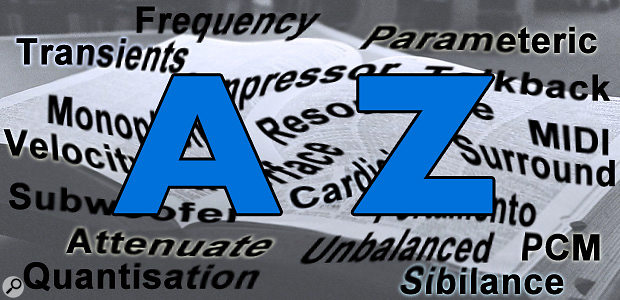You are here
Glossary
A commonly used audio connector, usually ¼ inch in diameter and with either two terminals (tip and sleeve known as TS) or three (tip, ring, sleeve called TRS). The TS version can only carry unbalanced mono signals, and is often used for electric instruments (guitars, keyboards, etc). The TRS version is used for unbalanced stereo signals (eg for headphones) or balanced mono signals.
A system of panel-mounted connectors used to bring inputs and outputs to a central point from where they can be routed using plug-in patch cords. Also called a patchbay.
Specialised words associated with a specialist subject.
Jitter in a digital system is a random or deterministic timing deviation from the required periodicity of a reference sample clock.
If affecting the clocking of an A-D converter it causes the analogue signal to be sampled at incorrect moments and thus generates amplitude errors in the digital data which cannot (easily) be removed. If the jitter is random this typically results in a slight increase in high-frequency noise and distortion.
If jitter affects the D-A converter it reproduces the accurate digital samples at slightly incorrect times, resulting in the reconstructed analogue waveform having amplitude errors. Again, if the jitter is random this typically results in a slight increase in HF noise.
More problematic is when the jitter has a deterministic character, often having fixed relationship to the system clocks or interfacing arrangements. This form of jitter creates unwanted spectral or tonal elements, and their typically anharmonic nature often makes them audible even when at extremely low amplitudes.
There are a variety of technical means of reducing and eradicating Jitter and, ideally, in a high quality digital audio system jitter should be in the low picoseconds range. Some digital clocking systems manage to get jitter down inro the femtosecond range!
Many digital interfaces, including S/PDIF and AES3, introduce some jitter (called interface jitter) as an inherent artefact of waveshape distortion caused by cable capacitance or fibre optic dispersion.
A hardware controller in the form of a rotary encoder which is often used to enable audio scrubbing in a DAW or audio editing platform.

